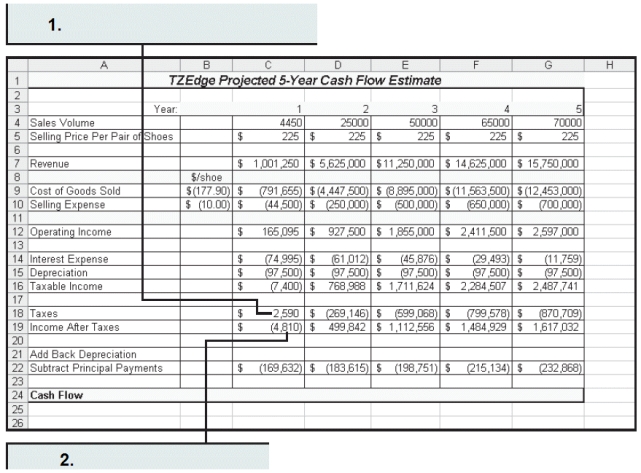
Phil has put together the worksheet above with a 5-year cash flow estimate for his shoe company. He needs to explain the chart to his investors. Please answer the questions below using this figure as a reference.
-To determine the projected cash flow, Phil must now total the following: taxable income, depreciation added back to the cash flow, and principal payments deducted from the cash flow (already a negative value) . Phil enters the following formula in cell C24 and copies it across the row: ____.
Definitions:
Competitive Firm
A business that operates in a market with many buyers and sellers, where the company does not have the market power to set prices.
Demand Curve
A graphical representation showing the relationship between the price of a good or service and the quantity demanded by consumers, typically downward sloping.
Perfectly Competitive Markets
Markets in which no individual producer or consumer has the market power to influence prices, characterized by many buyers and sellers, homogeneous products, and free entry and exit.
Economic Profits
The difference between a firm's total revenue and its total costs, including both explicit and implicit costs, measuring the excess over the opportunity cost of capital.
Q45: To emphasize categories of data and each
Q48: The _ function calculates the number of
Q52: If the values you want to look
Q62: The _ trendline is used to smooth
Q78: To import data using an XML map,
Q83: Range names are usually the source of
Q120: When creating a vertical lookup table with
Q126: When you graph a nonlinear function on
Q140: Briefly describe the eight common areas of
Q148: The syntax of the FV function is